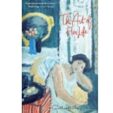In this deeply moving and transcendent novel, art–specifically, the work of Henri Matisse–is far from just a diversion, or some relic of the past enjoyed primarily within the confines of a museum or the pages of a book. Instead, for the protagonist, it becomes an increasingly vital way of connecting with others, and of forging a greater understanding of herself.
The protagonist, Emily, first encounters Matisse when she’s nine years old. During a visit to a museum, she becomes spellbound by his painting Breakfast. In the present, while Emily is working as an administrator at the Charleston Museum of Art, she has an opportunity to bring the painting back into her life. That opportunity comes through a museum-sponsored essay contest in which participants explain why a particular painting is their favorite. Top essayists’ chosen works will be exhibited at the museum, if they are available through a loan.
In her essay for the contest, about Breakfast, Emily observes that when she first saw the painting, she “knew–with the certainty that only a child can have–that this painting would be as much a part of my life story as falling in love and getting married.” With vivid and insightful prose, The Art of Her Life makes the importance of this painting–and other works by Matisse–abundantly clear. Throughout the novel, we see Emily gaining comfort, perspective, and wisdom from the colors, compositions, and situations on display in Matisse’s paintings and, sometimes, from the story and words of the artist himself.
Matisse’s paintings also help Emily forge a stronger connection to her two young daughters, Caroline and Elizabeth. As one example, Breakfast becomes the subject of a bedtime story Emily creates for the girls, and it becomes a favorite of theirs.
After Emily enters the essay contest, her chances of winning–and re-encountering Breakfast–look good. But she is facing challenges on other fronts. The death of her husband has left her a single mother. Perhaps more significantly, her marriage was troubled, leading her to question what she wants, and needs, from romantic relationships. One conclusion she arrives at is that she needs more independence within such relationships, more time to herself.
Eventually, this creates a conflict with her current lover, Mark, an old friend from college with whom Emily has forged a deep and potentially lasting connection. Mark, an archaeologist, wants to marry Emily and says he’ll forgo an extended research expedition to Turkey if she’s willing to commit to a life with him. She isn’t, and after Mark leaves for Turkey, their romantic relationship seems a thing of the past.
Then, a blood test reveals that Emily might have ovarian cancer, changing her perspective on her relationship with Mark and on life itself. As the novel progresses, Emily is faced with incredibly difficult situations and choices. Yet all along, Matisse’s paintings and wisdom provide comfort and guidance. Martin conveys the artist’s works as being both timeless and of the moment, with a life force that feels close to eternal. In the final pages of the novel, Emily’s connection to Matisse and his paintings seems to grow even stronger and more vital, showing how art can connect us to the divine, in every sense of that word. It’s the perfect conclusion for this heartfelt and revelatory book.
Would My Pick be Your Pick?
If you're interested in ________, the answer may be "Yes":■ Fine art and painting, especially the work of Henri Matisse
■ Family stories
■ Stories about romantic relationships and conflicts within them
■ Stories about coping with illness





